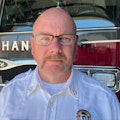The fire officer strides purposely into the fire station, ready to begin the shift. After the officer’s PPE is placed on the apparatus and assigned equipment is checked, a cup of coffee is grabbed on the way to the office to begin the day.
For the fire officer, this isn’t just routine. What’s done at the beginning of the shift and how it’s done lays the groundwork for the entire crew’s day, shaping it into either a triumph or a challenge.
This time also is the most stressful part of the fire officer’s shift, particularly for a newly promoted individual. The responsibility of orchestrating tasks while navigating emergency responses can be daunting. In the words of composer Leonard Bernstein, “To achieve great things, two things are needed: a plan and not quite enough time.”
Success for the fire officer hinges on adhering to the daily routine that’s summarized by the acronym EOC: emails, organization and coffee. These pillars not only unlock the doors to productivity but also pave the way for accomplishing the essential tasks of the day. A reminder echoes: Plan the day, or the day will plan you.
Within the growing web of communication platforms, email still stands as a crucial thread, weaving together the information that shapes a department’s operations and procedures. However, the deluge of emails can be overwhelming, burying essential details amid the digital chaos.
Recognizing the pivotal role of emails in not only disseminating departmental updates but also fostering the growth of our personnel, I tackle this task first every day.
By designating the tackling of the inbox as the first task, I set into motion a sequence of organized priorities. Drawing inspiration from David Allen, who is the author of “Getting Things Done: The Art of Stress-Free Productivity” (Penguin Books), the strategy revolves around the creation of folders that are tailored to specific tasks or priorities. These folders serve as virtual havens, allowing the swift relocation of emails to their designated spaces, to prevent them from drowning in the sea of the inbox.
In the ever-evolving landscape of email technology, the fire officer can leverage the advanced features of modern email programs. Color-specific folders, inbox rules and other options pave the way for a streamlined process, which makes email management more digestible. Through this approach, the fire officer not only stays afloat in the deluge of information but also gains mastery over the currents, which ensures efficient processing of emails to meet the demands of the day.
Resist the temptation to be at the beck and call of your inbox throughout the day. Instead of constantly reacting to the ping of incoming messages, consider refraining from immediate responses. Creating designated intervals in the morning and late afternoon to read and respond to emails allows reclaiming of control over schedule and focus work, which fosters a more productive and concentrated work environment.
Remember, the power lies not just in responding promptly but in orchestrating your responses with intention and purpose.
Organization
In the demanding role of a fire officer, effective organization is paramount to successfully navigate the tasks that come one’s way, and a newly promoted fire officer might find the range of responsibilities overwhelming.
Organizational challenges can be exacerbated by the fact that senior fire officers, who often are entrusted by department administration staff, are tasked with crucial activities, such as attending important meetings, leading training sessions and engaging in community visits. The efficient organization of a fire officer’s day becomes a serious factor in ensuring productivity and the smooth operation of the fire department.
Jocko Willink’s concept of prioritize and execute, as highlighted in his book “Extreme Ownership: How U.S. Navy SEALS Lead and Win” (St. Martin’s Press), resonates strongly in the context of a fire officer’s responsibilities. This principle involves the systematic identification of priorities and their subsequent execution in order of importance.
Implementing the prioritize and execute strategy not only aids in time management but also contributes to the development of a successful shift for the fire officer. It ensures that essential tasks are given precedence, which reduces the risk of overlooking critical responsibilities. As fire officers learn to navigate the complexities of their role, mastering the art of prioritization becomes a cornerstone for effective leadership and operational excellence within the department.
Coffee
One of the staples of the firehouse is a cup of coffee, the lifeblood of the fire service for many firefighters. As I start my day, a cup of coffee is a grounding act. Armed with that cup of coffee, I can sit down at my desk and start to plan the day ahead.
That cup of coffee also allows fire officers to interact with the personnel who are in the station. This openness and availability allow fire officers to develop and grow the relationships that are so important to their job.
With my trusty cup of coffee in hand, I find myself seated at my desk, ready to methodically chart the course of the day. This simple act not only kick-starts my cognitive gears but also serves as a meditative introduction to the tasks that await. The aromatic essence that wafts from the coffee cup creates a conducive atmosphere for focused planning and strategic thinking.
In essence, the cup of coffee transcends its role as a mere beverage; it becomes a symbolic bridge that connects individuals within the firehouse and facilitates the growth of essential relationships. This small yet significant daily ritual embodies the camaraderie and unity that define the firefighting community, reinforcing the notion that, sometimes, the warmth of a shared cup of coffee can ignite more than just a caffeine boost: It can spark the bonds that make a fire station a home.
Multiple benefits
Beyond the daily routine, EOC becomes a guiding philosophy, reminding fire officers to plan the day, lest the day runs them. As the aroma of coffee lingers in the air, so does the essence of a shared commitment: to navigate the challenges, build relationships and ignite bonds.
Using EOC, fire officers not only manage tasks but develop a culture of unity while growing their personnel to handle anything that they might confront.
About the Author

Christopher Zak
Christopher D. Zak has more than three decades of experience in the fire service. He currently holds the position of Assistant Fire Chief/Chief of Operations at the Hanahan, SC, Fire Department. Zak previously served as a battalion chief for the Milford, CT, Fire Department (MFD). His fire/rescue experience spans all parts of emergency services as well as special operations, having served on the MFD’s dive and hazmat teams. Zak was the original rescue team manager of the Urban Search and Rescue, Connecticut Task Force 1. He is a member of the International Society of Fire Service Instructors, an adjunct instructor for the Connecticut Fire Academy and secretary for the Charleston Area Training Officers Association.
